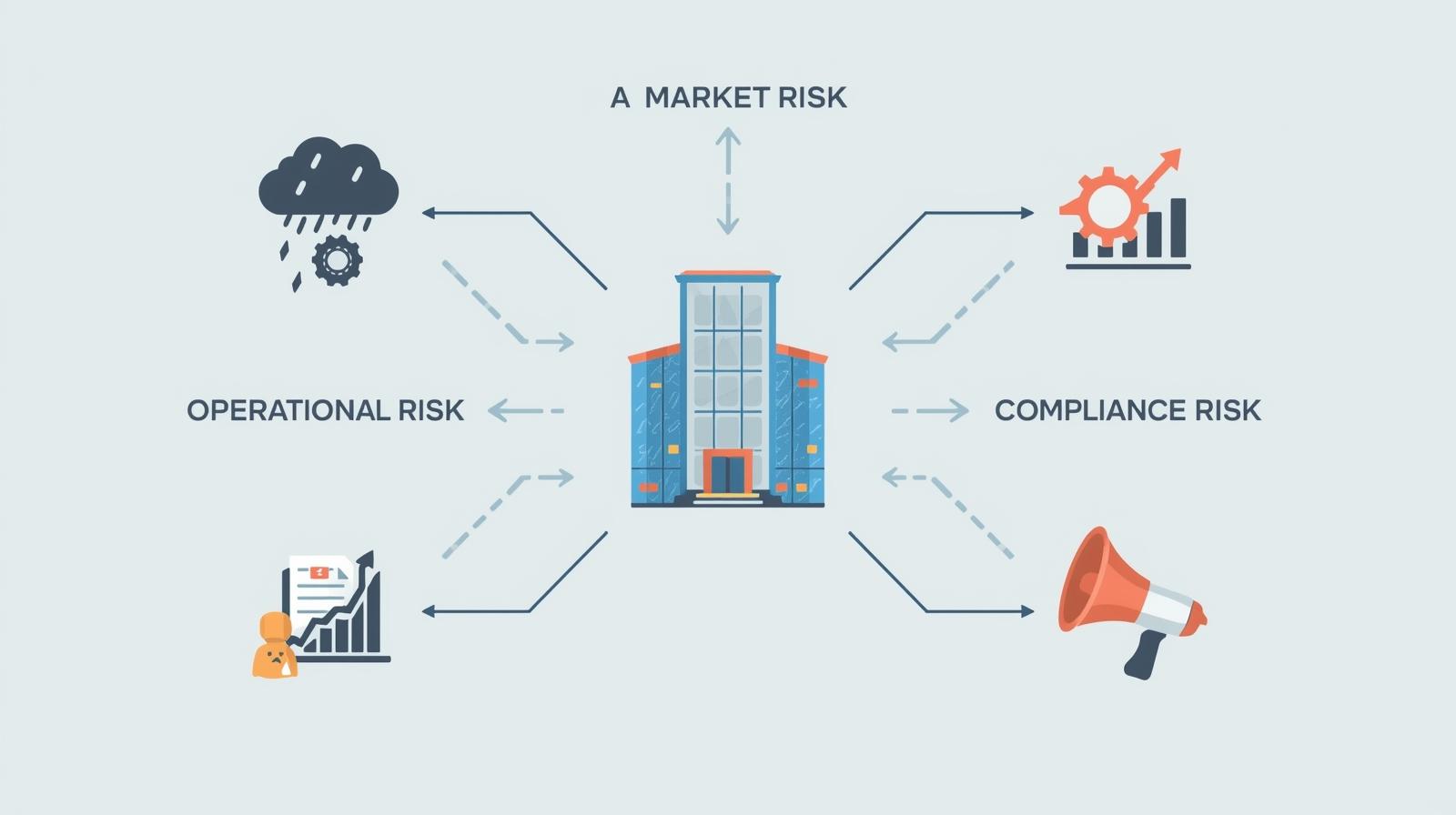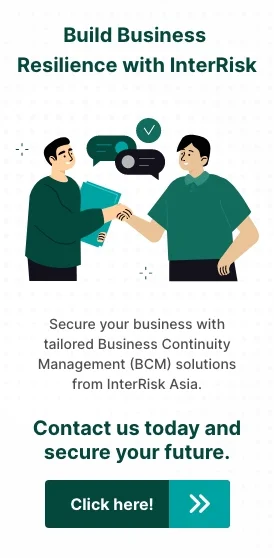What are business risks What are they? how can they be managed?
In today’s rapidly changing business world, risk management within an organization is a crucial aspect that no entrepreneur should overlook. This article will guide you through a deep understanding of what business risk is, why it matters, and explore the various types of risks that organizations face — whether financial, operational, or external factors. It also presents practical approaches and strategies that can be applied to manage these risks effectively, helping to build stability and create sustainable growth opportunities for your business.
HIGHLIGHTS:
- Business risk is the uncertainty that may affect an organization’s ability to achieve its goals. It is not something to be avoided, but rather something to be understood and managed.
- There are six main types of business risk: strategic, operational, financial, legal and regulatory, disaster-related, and technological. Each type has a different impact on the organization.
- The benefits of risk management include reducing potential losses, enhancing informed decision-making, increasing competitiveness, and building trust among stakeholders.
- In the age of AI and advanced technology, the development of Generative AI (GenAI) presents both new opportunities and emerging risks related to strategy, technology, and legal frameworks. Organizations must adapt carefully and thoughtfully.
- Internal risks can be controlled (e.g., management decisions), while external risks are beyond control (e.g., economic conditions, natural disasters, political factors).
Business risk What is it?
According to ISO 31000, risk is defined as the effect of uncertainty on objectives. When the term “business” is added, business risk refers to the uncertainty that may impact an organization’s ability to achieve its business goals, such as revenue, profit, competitiveness, or reputation. Business risk is not merely something to be avoided; it is something that must be understood and managed in order to create opportunities and ensure long-term sustainability for the organization.
How many types of business risks are there, and what are they?

If we apply the framework of Enterprise Risk Management (ERM), business risks can be broadly categorized as follows:
Strategic Risks
This type of risk arises from organizational decisions and strategic direction-setting, such as:
- Picking wrong strategies
- Failure from entering new market
- Technological and consumer changes
- Failure to adapt to competition
Operational Risks
Related to internal processes, systems, personnel, or events that affect operations, such as:
- Human error
- IT system failure
- Supply chain problems
- Lack of manpower and skills
Financial Risk
Related to the financial management of the organization, such as:
- Exchange rate volatility
- Lack of cash flow and liquidity
- Failure from investment
- Debtor default
Compliance & Legal Risks
Arising from non-compliance with laws, regulations, or rules related to operations, such as:
- Violation of labor laws
- Violation of environmental regulations
- Violation of GDPR
Hazard Risks
This type of risk arises from events that pose threats to life, property, or the environment. These events are typically beyond direct control and can have a significant impact on the organization’s operations, such as:
- Fire
- Flood
- Earthquake
Technology Risks
This type of risk arises from the use of or reliance on technology, which may affect operational capabilities, data security, or the organization’s competitiveness, such as:
- Cybersecurity
- Using outdated technology
- Digital transformation failure
- Unsafe handling of information
Business risk management Why is it important?

As previously mentioned in the article on risk management, managing business risks is crucial to the stability and sustainability of a business—especially in an era where the business environment is rapidly changing and becoming increasingly complex. Therefore, we have summarized the key reasons why businesses must manage risks as follows:
Reduce losses
Risk management helps reduce the likelihood and impact of losses, whether from revenue shortfalls, reputational damage, or operational disruptions.
Help executives make informed decisions
Having information about risks enables executives to make decisions more carefully and rationally.
Enhancing competitiveness
Organizations that manage business risks effectively are able to adapt quickly and respond efficiently to market changes.
Building trust and protecting the organization’s reputation
Effective risk management increases confidence among investors, customers, and business partners, while also protecting the organization’s reputation during times of crisis through well-managed responses.
Example of business risk that affects the operation
To provide a clearer picture of business risks, we have listed some examples of business risks below as follows:
Risk from technological changes and generative AI
Over the past 2–3 years, everyone may have noticed that the development of technology and GenAI has grown and changed very rapidly. Today, as more people begin to use AI for work, research, and integration into business operations, companies that adapt quickly and adopt AI may gain a competitive advantage. However, at the same time, this also increases the risk of relying on technology that is still unstable, and raises concerns about data security and related laws.
It is evident that this single issue is related to three types of business risks: Strategic Risks, Technology Risks, and Compliance & Legal Risks.
Frequently Asked Questions (FAQs)
What internal risk factors could potentially impact the business?
Internal risks that impact the business often stem from decisions made by management or executive teams in pursuit of growth. These decisions can lead to tangible risks, such as fire hazards and increased safety concerns in the production process, resulting from decisions to increase production capacity and install new machinery. Generally, these types of risks are controllable and preventable.
What external risk factors could potentially impact the business?
External risk factors that impact businesses are often beyond our control. These can be categorized into three main types: economic factors, such as the global economic situation; natural factors, such as natural disasters and environmental issues; and political factors, such as international conflicts or wars.
How is business risk related to busines continuity?
Risk analysis and management are key principles and form an essential part of the business continuity management system. Organizations need to assess risks that may affect prioritized activities and critical resources, as well as identify single points of failure in order to establish risk mitigation measures and business continuity strategies.
Conduct business risk management with InterRisk Asia
This article takes us through the concept of business risk, exploring the different types of risks and how they affect businesses. It also explains the importance of risk assessment and provides real-life examples of business risks through the growth of technology and AI. If your organization is facing challenges related to business risk assessment or business continuity issues, you can receive a free initial consultation with InterRisk Asia!
InterRisk Asia is a leading business continuity consulting firm in Thailand, operates under the MS&AD Group from Japan.
End-to-end consulting for the development of a robust BCMS, with pathways to ISO 22301 certification
Specialized training programs designed for both management and staff to enhance awareness and competency in BCMS practices.
Analysis of operational risks and disruption impacts to inform the development of targeted continuity strategies.
Structured exercises to validate your BCP and strengthen organizational preparedness and response capabilities.
Experienced consultants with hands-on BCMS expertise
Customized planning tailored to your business context.
Practical tools and templates, with expert support for testing and improvement.

